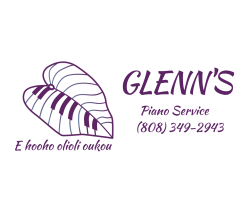Using an ETD to tune your piano vs tuning a piano aurally.
The first Electronic Tuning Device, (ETD), called the Conn Strobotuner, was invented in the 1932. This machine gave an accurate visual indication of the frequency of a sound or an electrical signal. It compares the frequency to be measured with internal frequency standards based upon the equally tempered musical scale. By stroboscopic comparison it indicates whether the frequency being checked is sharp, flat, or in tune with the reference standard. This machine gained wide acceptance throughout the music world in the 1950’s and 60’s, and was used extensively by bands, orchestras, choruses, and piano tuners, including my father.
However, what this machine was not able to do was to determine the stretch when tuning a piano to compensate for inharmonicity, (as was discussed last month). In 1972 a physicist at MIT, Dr. Albert Sanderson, a good amateur pianist, was not satisfied how his piano sounded after it was tuned with a Strobotuner, so he invented a machine that could calculate the stretch of a piano. Because not every piano has the same stretch, he devised a way to measure the stretch on different pianos. He called his machine the Sight-O-Tuner (SOT). In 1982 he renamed his invention the Sanderson Accutuner, (SAT). Since then, several other piano tuners have developed variations of this method of calculating stretch.
Electronic Tuning Devices, (ETD’s), are now used by most piano tuners. But how accurate are they? As a piano tuner for over 40 years, and one who learned to tune aurally, I can honestly say that an ETD, when used properly, is almost as good as the best aural tuner. I say almost, because no matter how accurate an ETD can tune a piano, I have found very slight discrepancies in the final result of the ETD tuning. This view is shared by many top level concert tuners I know from around the world.
The invention of the ETD has made tuning a piano much easier. Almost anyone who has the tools can now tune a piano using only the ETD. But as I mentioned, the machine needs to be used properly. It is very easy to make a mistake using an ETD. Unless the tuner knows what a properly tuned piano is supposed to sound like, it is very easy for a piano tuner who relies only on the ETD, to leave the piano sounding out of tune. The piano tuner should know how to listen for the slight discrepancies. By the same token, however, there are piano tuners who never learned how to properly set a temperament aurally, and their results can be equally devastating. Unfortunately, I have tuned pianos that were tuned by some of these tuners, which needed a considerable amount of adjustments before I could tune the piano.
The Piano Technicians Guild, (PTG), has a classification of Registered Piano Technician, (RPT). To become an RPT, a piano tuner has to pass three exams, one of which is the tuning exam. Part of the tuning exam requires an RPT candidate to tune the middle two octaves aurally, or “by ear.” This part of the exam is difficult, but it is the only way to tell if the tuner has the skills to recognize when a piano is tuned properly.
The tuning exam is given on a good quality grand piano. The initial tuning, called the master tuning, is performed by three RPT’s, one of whom is a Certified Tuning Examiner, (CTE). To qualify as a CTE, a tuner must tune a piano aurally and achieve a score of 90% or better. (I was a CTE for over 20 years). A master tuning can take up to four hours, as every string on the piano is analyzed and scrutinized by those three RPT’s. Once they have determined that the piano is tuned as perfectly as possible, the results are recorded on an ETD. An RPT candidate then tunes the piano and his/her results are compared to the master tuning.
A piano tuned with an ETD can be very accurate. But it is a tool to be used in conjunction with tuning the piano aurally. An aural tuning can also be very accurate, but the tuner needs to have the knowledge and ability to tune a piano to a standard that is accepted by his/her peers.
